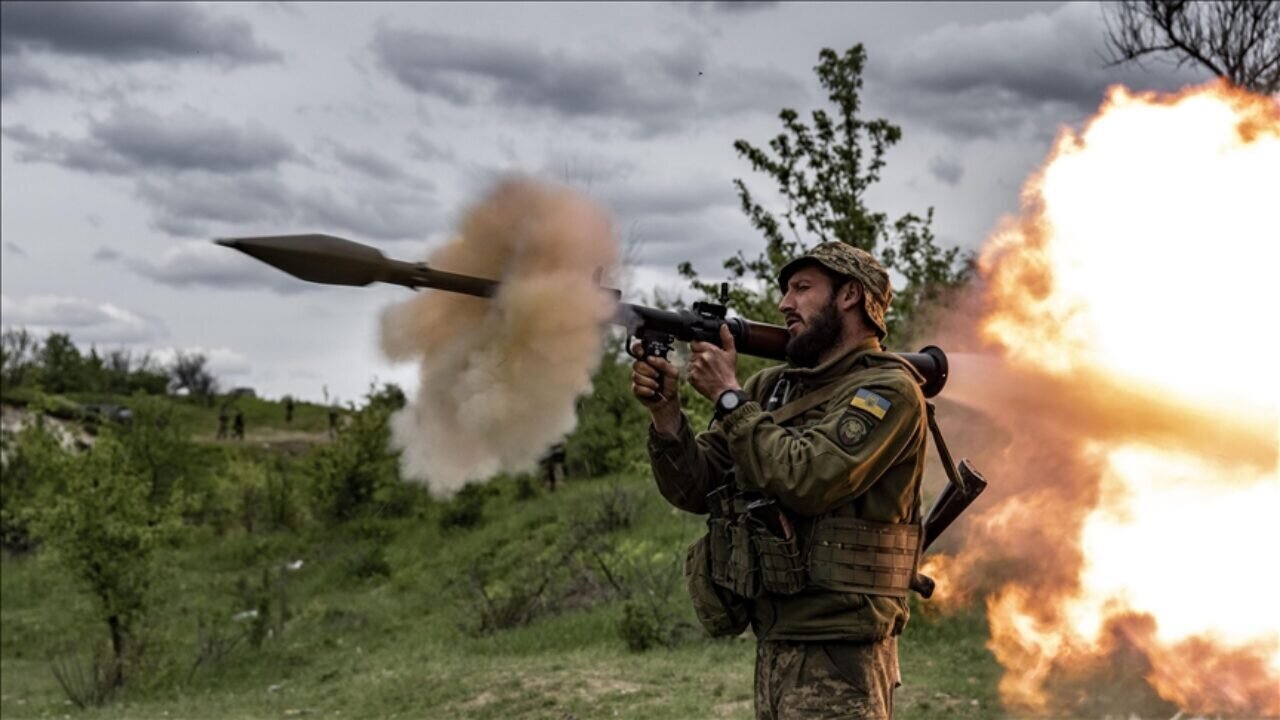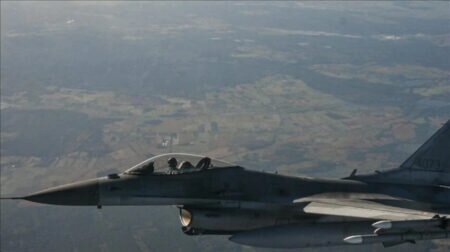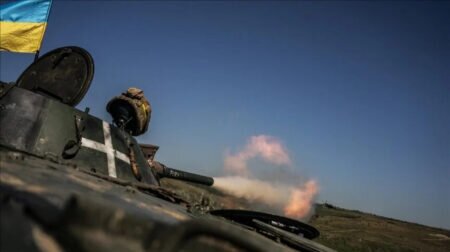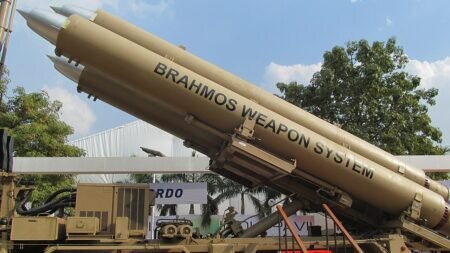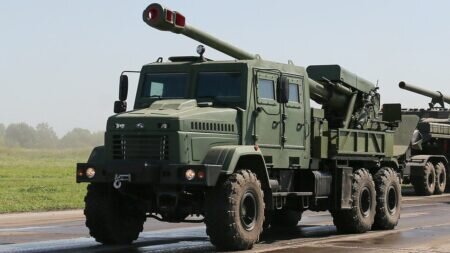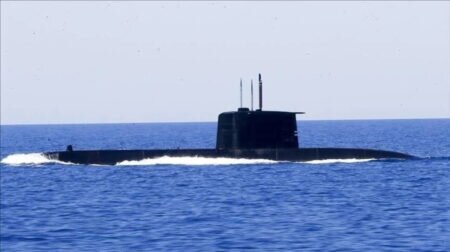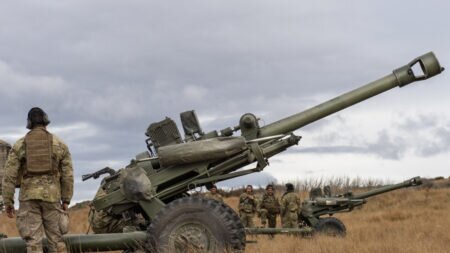The US has led in providing assistance to Ukraine during its war with Russia.
From the time US President Joe Biden took office on Jan. 20, 2021 until now, Washington has furnished Kyiv with $44.4 billion in military aid, and a significant portion of this assistance -- specifically $43.7 billion -- has been distributed starting from Feb. 24, 2022, when the war commenced.
Anadolu has gathered the latest details on the military equipment, supplies and financial support sent by the US to Ukraine.
The Kiel Institute for the World Economy, a Germany-based research institute specializing in gathering data on global aid directed to Ukraine, has revealed that the US has provided approximately $76 billion in humanitarian, financial and military support to Kyiv since the beginning of the conflict.
Based on information from the US Agency for International Development (USAID), the United States has offered $2.6 billion in humanitarian assistance to Ukraine since the conflict began.
Although the US has not released an official statement regarding the value of its financial aid to the country, the Kiel Institute estimates that this support totals around $27 billion.
US sent first military aid package to Ukraine as conflict began
President Biden approved a $350 million military aid package a day after the Russia-Ukraine war started.
It included small arms and ammunition as well as anti-armor systems and equipment for “Ukraine's frontline defenders,” according to the Pentagon.
Biden announced that the US would provide an additional $800 million in arms and defense assistance to Ukraine in a written statement on Apr. 13, 2022.
As Russia began targeting infrastructure in Ukraine such as schools and hospitals in July 2022, the Pentagon announced an additional $820 million in security assistance to Ukraine, including advanced air defense systems.
The package included two National Advanced Surface-to-Air Missile Systems (NASAMS), 150,000 rounds of 155mm artillery ammunition and four additional counter-battery fire-tracking radars.
This marked Ukraine's acquisition of its first NASAMS systems for air defense.
The US provided Ukraine's military with approximately $29.8 billion in arms and equipment during the first year of the conflict, according to data compiled by Anadolu based on Pentagon reports.
This assistance included 300 million rounds of small arms ammunition and grenades, 12 NASAMS systems, Patriot air defense systems, HAWK air defense systems and missiles, 198 M777 howitzer artillery pieces, over 2 million rounds of 155mm artillery ammunition, 500-plus Mine-Resistant Ambush Protected (MRAP) vehicles and 186 Bradley armored infantry fighting vehicles.
In addition, the US supplied Ukraine with 20 Mi-17 helicopters, 45 T-72B tanks, High-Speed Anti-Radiation Missiles (HARM) and over 2,000 High Mobility Multipurpose Wheeled Vehicles (HMMWVs).
Negotiations between Germany and US regarding tanks
The US had been reluctant to supply tanks to Ukraine for a considerable period.
However, the Biden administration found itself in a challenging position when it insisted on providing tanks as a condition during discussions about Germany's provision of Leopard tanks to Ukraine.
Consequently, the administration swiftly announced its intention to purchase 31 M1 Abrams tanks for eventual deployment to the Ukrainian military.
The US government estimates that these tanks could be operational on the Ukrainian frontlines by the coming autumn.
US provision of cluster bomb support to Ukraine draws attention
The provision of cluster bombs and depleted uranium munitions to Ukraine by the US garnered attention.
US National Security Advisor Jake Sullivan announced on July 7 that the US would provide cluster bombs to Ukraine, acknowledging the risk of harm to civilians.
Biden characterized this decision as a "very difficult one" and said he had consulted with allies and members of Congress on the matter.
Russian Foreign Ministry spokeswoman Maria Zakharova pointed to the potential dangers of cluster bombs, noting their persistence as a threat even after conflicts have ended in the Middle East.
She argued that the US would bear responsibility for the casualties, including Ukrainian and Russian children.
Russian Defense Minister Sergey Shoygu also claimed that Russia possessed more effective cluster munitions and that if the US sent cluster bombs to Ukraine, the Russian Armed Forces would be forced to use similar weapons against the Ukrainian Armed Forces.
The stockpiling and sale of cluster munitions, which have remained a threat for years as remnants of war and continue to generate controversy, were banned under the 2008 Convention on Cluster Munitions.
Notably, the US, Ukraine and Russia are not parties to the treaty.
Depleted uranium rounds to be used in Abrams tanks.
The Pentagon announced on Sept. 6 this year that it would send depleted uranium ammunition to Ukraine for the first time as part of its defense assistance.
These rounds were intended for use in 31 M1 Abrams tanks.
Kremlin spokesperson Dmitry Peskov reacted to this decision, saying the responsibility for the consequences of using depleted uranium munitions would rest entirely with the US.
Peskov cited prior cases where the deployment of such munitions had led to higher rates of cancer and other illnesses within affected communities, possibly causing effects across generations.
However, the Pentagon rejected claims by the Kremlin that depleted uranium munitions posed a health threat and could cause cancer.
The total assistance provided by the US to Ukraine since the start of the conflict accounts for approximately 5% of the US defense budget for the 2023 fiscal year and around 0.2% of its gross domestic product, as stated in a report by the Hudson Institute titled "Why a Ukrainian Victory Matters to Americans."
Biden requests additional funding from Congress
Biden has urged Congress to provide additional funding.
He made the request on Aug. 10, calling for Congress to authorize a $40 billion emergency fund to assist Ukraine, address disaster relief and tackle border and immigration matters.
If approved by Congress, a portion of this fund -- up to $24 billion -- would be allocated for assistance to Ukraine and other international needs, $12 billion for disaster relief, and up to $4 billion for addressing border and immigration issues.
2 new aid packages to Ukraine from US in near future
The US announced two new aid packages for Ukraine in the near term.
US Secretary of State Antony Blinken on Sept. 6 announced a new aid package of $1 billion during a surprise visit to Ukraine.
The package includes $175 million in defense assistance encompassing High Mobility Artillery Rocket Systems (HIMARS) missiles, Javelin anti-tank missile systems, anti-tank systems, and depleted uranium rounds for Abrams tanks.
In addition, $300 million of the newly announced package will support law enforcement efforts to establish order in areas reclaimed from Russia.
Shortly after Blinken's commitment, the Pentagon announced an additional aid package of $600 million to Ukraine.
This long-term assistance package, to be delivered through the Ukraine Security Assistance Initiative (USAI), will include equipment for sustaining and integrating Ukraine's air defense systems, HIMARS equipment, artillery ammunition, electronic warfare tools, demining equipment and support and equipment for training, maintenance and sustainment activities.
Source: AA

